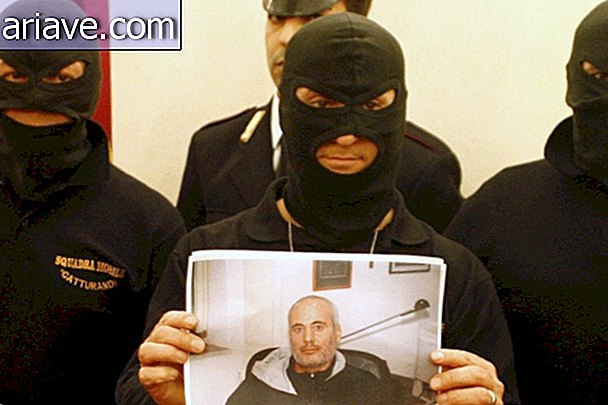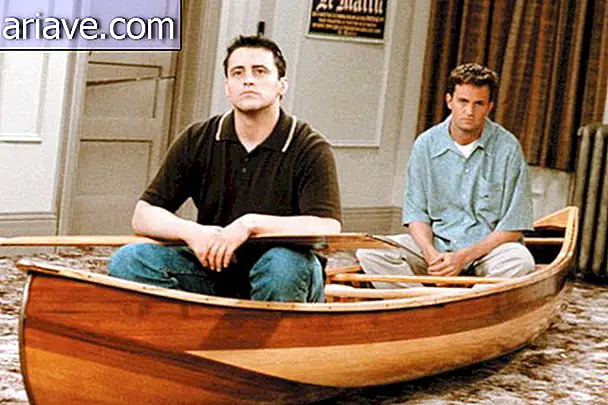Historical Drops # 013: Your weekly dose of History here at Mega!
This week's Historical Drops column features a wealth of information about World War I, World War II, and the Cold War, such as the Soviet-style Berlin Blockade to prevent supplies from entering the Allied-controlled German capital. .
Another important issue of the Cold War is the Korean War, which began almost 70 years ago and theoretically has not yet ended, as countries have not signed a peace treaty. Related to World War I, we have the assassination of Francisco Ferdinando, an event known to have started the conflict; and the signing of the Treaty of Versailles, which ended the First War but motivated the beginning of the Second. Check out!
June 25th
1792: Measurement of the Paris Meridian, origin of the Decimal Metric System, begins.

It is a line that crosses the meridian of the Paris Observatory in the French capital. The Paris Meridian was a long rival of Greenwich in the United Kingdom and Antwerp in Belgium. They all vied for the rank of first in the world.
Despite losing his post to Greenwich, the Paris Meridian served as the basis for determining the meter length in 1799, which is now part of the metric system - an international measurement system created in France during the French Revolution due to the difficulties of operation. of commerce and industry. At the time, various measurement standards coexisted around the world.
1948: Berlin blockade begins
It was one of the biggest Cold War crises that occurred during the Allied occupation in Berlin after World War II. The Soviets blocked roads, railways and access channels to Western-controlled sections of the city, but offered to end the blockade if the Allies abandoned the German Mark, the newly introduced West German currency.
As there was no negotiation, the Allies organized a kind of air bridge that began to work two days after the blockade. It was a very difficult feat due to the size of the city's population. For almost 1 year, 200, 000 flights were carried that carried almost 9 tons of articles such as food and fuel. The Soviets did not stop air travel for fear of open conflict, and the blockade was suspended on May 12, 1949.
1950: Beginning of the Korean War
It was a war between North Korea, with the support of China and the Soviet Union, and the South, with the main support of the United States. The war began when North Korea invaded South Korea after several clashes along the border.
Korea was divided into two regions with separate governments resulting from the Cold War between the United States and the Soviet Union. Both claimed to be the legitimate government of the entire territory and did not accept the border as permanent.
After months of battles, an armistice was signed on July 27, 1953, resulting in the Korean Demilitarized Zone to separate North and South Korea, as well as the return of prisoners. However, no peace treaty has been signed, so both countries are technically at war today.
June 26th
1409: Great Schism of the West, rupture of the Catholic Church between 1378 and 1417

It was a major papal crisis in Catholicism, dividing 40 years of Catholic Christianity into two rival currents. The trouble began when the French king transferred the pope and his entire structure to Avignon, France, in 1309.
The Great Schism began in simultaneous papal succession in 1378, one in Rome and one in Avignon, whose holders were classified as antipopes by their opponents. The crisis only ended with the Council of Constance in 1417, when the papacy was definitively reestablished in Rome.
1945: The United Nations Charter is signed in San Francisco, USA.
This is the founding treaty of the United Nations, an intergovernmental organization that promotes international cooperation and order among member countries. The charter defends the human rights of citizens and has set high standards to be followed by nations, covering economic, social and health situations.
The letter also advocates for fundamental freedoms for all, regardless of race, sex, language or religion. It was initially signed by 50 of its 51 members (Poland was unrepresented and therefore signed 2 months later) and entered into force on October 24, 1945. Today, most countries in the world have already ratified the letter. .
1968: Hundred Thousand March, a demonstration against the dictatorship
It was one of the most expressive popular manifestations against the military coup, marking the height of the resistance of Brazilian democracy. The march brought together intellectuals, religious, artists and students who concentrated in downtown Rio de Janeiro.
Initially the demonstration had been banned by the dictatorship, but fear of bloodshed caused the military regime to retreat. A commission of civil society representatives was elected during the march, which would be received by General Costa e Silva days later. The group requested release of imprisoned students, among other things, but none of the claims were accepted.
June 28th
1914: Francisco Ferdinando is assassinated, triggering World War I

Francisco Ferdinando was the presumptive heir to the Austro-Hungarian throne. On a trip to Saravejo, he was murdered along with his wife, Sofia, by Gavrilo Princip, a member of the Black Hand secret society, fighting for the creation of Greater Serbia.
Following the attack, Austria-Hungary issued an ultimatum to the Kingdom of Serbia which was partially rejected. The country then declared war, triggering actions that led to World War I, involving most European countries.
1919: Germany is required to sign the Versailles Treaty
The Versailles Treaty was the most important peace treaty that ended World War I, ending the state of war between Germany and the Allied powers, exactly 5 years after the assassination of Archduke Francisco Ferdinando.
One of the most important and controversial provisions of the treaty was that Germany would have to accept responsibility for all damages and losses during the war. In addition, the treaty forced the nation to disarm, make substantial territorial concessions, and pay compensation to certain countries. By 1921, the total cost of repairs had been estimated at $ 32 billion (the equivalent of $ 442 billion in 2018).
June 29th
1949: South Africa officially deploys Apartheid
Apartheid, which literally means separation in African, was an institutionalized and discriminatory system of racial segregation implemented by the South African government following the victory of the New National Party. Through it, rules were created to regulate relations between whites and blacks.
With apartheid, the black majority (around 8 million inhabitants) no longer had the right to vote or move through spaces for the white minority (around 2 million inhabitants). Blacks were confined to specific areas with little or no structure, and had segregated education and were even forbidden to marry people of other ethnicities.
Mandela's release in 1990 contributed to the end of Apartheid, which was definitively closed in 1992 by a vote. A year later, he would be elected the first black president of the country.
June 30
1997: JK Rowling releases the first Harry Potter book

The idea of writing the book first came up in 1990, when Rowling was on a crowded train traveling from Manchester to London. The British writer finalized the story in 1995 and sent the manuscript to several publishers. Eight of them turned down "Harry Potter and the Sorcerer's Stone" until Bloomsbury accepted the project, paying him an advance of £ 2, 500.
The Harry Potter book series has become a smash hit, attracting young and adult readers from around the world; To date, more than half a billion copies have been sold. In addition, history has gained an immensely popular movie series and even an area at Universal's theme parks.
July 1st
1994: Real is released
The Real Plan's main objective was to reduce the hyperinflation that plagued the country in the early 1990s. It was one of the most important parts of the project and, coupled with the drastic fall in inflation rates, proved to be a stable currency for the country.
Currently, the Real is the second most traded currency in Latin America, the fourth most traded currency in the Americas, and the 16th most traded currency in the world.
***
Do you know the Mega Curioso newsletter? Weekly, we produce exclusive content for lovers of the biggest curiosities and bizarres of this big world! Register your email and do not miss this way to keep in touch!











